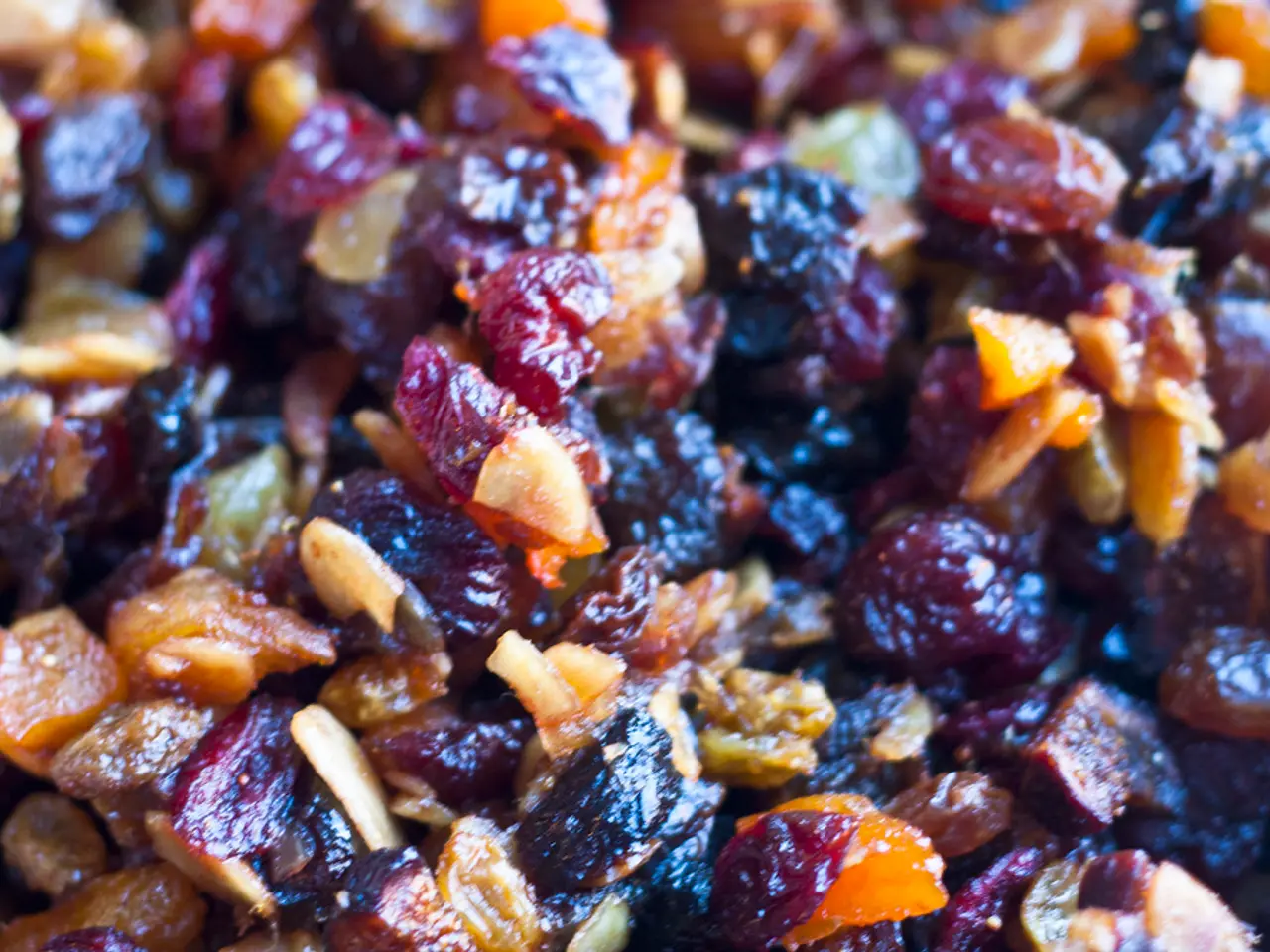Understanding the nature of ultra-processed foods and their effects on human health
In the realm of nutrition, a clear understanding of the foods we consume is crucial. One system that sheds light on this matter is the NOVA classification system, which defines ultra-processed foods (UPFs) as industrial formulations that undergo extensive processing and contain ingredients not typically used in home cooking. These foods, often marketed for their convenience and palatability, are designed to be highly formulated and include items like soft drinks, packaged snacks, and ready-to-eat meals [1][4].
The NOVA system categorizes foods into four groups: unprocessed or minimally processed, processed culinary ingredients, processed foods, and ultra-processed foods. The latter category is characterized by multiple industrial ingredients and techniques that significantly alter the original food [1][2][4]. It's important to note that the NOVA system focuses on the degree and type of processing, rather than the nutritional content of foods. This means that some nutritionally beneficial products can also fall under the ultra-processed category if they meet the processing criteria [4][5].
Recent studies have raised concerns about the health implications of UPFs. A study led by researchers at Harvard T.H. Chan School of Public Health found that a high intake of ultra-processed foods may increase the risk of early death and death from neurodegenerative diseases [6]. Another study found a direct association between greater ultra-processed food exposure and higher risks of deaths from cardiovascular disease [7].
These findings are alarming, as studies have also linked consumption of UPFs to weight gain and higher risks of cardiovascular disease and death [8]. A registered dietitian nutritionist, Jennifer Taylor, suggests that longer ingredient lists and higher added sugars, fat content, and calories in a food product may indicate ultra-processed food [9].
Taylor emphasizes that making small changes can have a significant impact on one's health. To limit the consumption of UPFs, she recommends making as many meals at home as possible and gradually replacing processed items with less processed options during grocery shopping [9]. Michele Polacsek, a professor of public health, agrees and notes that food labels do not provide information about the industrial processes involved in creating ultra-processed food items [10].
Polacsek stresses the importance of having a standard definition for ultra-processed foods to promote healthier food choices. She suggests that policy makers create a standard definition for ultra-processed foods to help manufacturers, supermarkets, schools, and others make informed decisions about selling or buying these products [10]. This standardization could play a vital role in guiding consumers towards healthier food options and potentially reducing the risks associated with ultra-processed foods.
In summary, the standard definition of ultra-processed foods according to NOVA is foods that are industrially manufactured using multiple processes and ingredients that are rarely or never used in domestic preparation, resulting in products that are highly formulated, convenient, and often energy-dense but nutritionally poor [1][4]. As research continues to uncover the health risks associated with these foods, it's essential to make informed choices about our diet and to advocate for policies that promote healthier food options.
- The realm of nutrition necessitates a clear understanding of foods we consume, which can be aided by systems like the NOVA classification system that defines ultra-processed foods (UPFs).
- The NOVA system categorizes foods into four groups, with UPFs being characterized by multiple industrial ingredients and techniques that significantly alter the original food.
- Recent studies have linked consumption of UPFs to several health risks, including early death, neurodegenerative diseases, cardiovascular disease, weight gain, and higher risks of death.
- To limit the consumption of UPFs, dietitians and public health experts suggest making as many meals at home as possible and gradually replacing processed items with less processed options during grocery shopping.
- Policy makers are urged to create a standard definition for UPFs to promote healthier food choices, guide consumers towards healthier food options, and potentially reduce the risks associated with ultra-processed foods.




